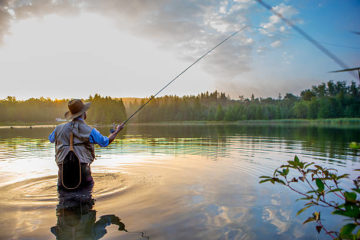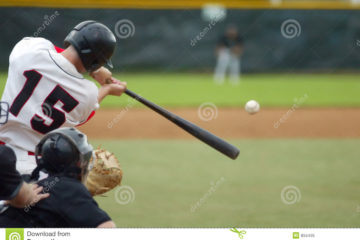SPORTS: Yes, You Can Learn How to Ski in Just Three Days

published Dec 12th 2016, 5:38 am, by Drake Bennett
(Bloomberg Pursuits) —
“Do you smoke?” Ali MacGrain asks in his Scottish brogue.
We’re standing on skis, I somewhat unsteadily, in bright morning sunlight on a lower flank of Northstar California Resort. MacGrain teaches skiing here, and though his accent doesn’t fit my template of a Sierra Nevada ski guru, at the age of 35 he’s already taught for 39 winters, migrating between the Northern and Southern hemispheres. He’s certified as a Level III instructor, the highest possible, by both the Professional Ski Instructors of America and the New Zealand Snowsports Instructors’ Alliance, and these days he mostly teaches and tests other instructors.
So if he thinks a smoke is what my skiing needs, I’m not going to question it. For all I know, Scotland is the sort of place where cigarettes are a vital part of alpine sports pedagogy. I grew up in glacier-flattened Indiana and was 13 when my family moved to New Hampshire. I tried skiing a couple of times and then quickly took up snowboarding, which had two advantages: It was less embarrassing to be bad at—lots of people were trying it out at the time—and it had a shorter learning curve.
After a few winters, I was able to gracelessly make my way down most of the mountains within a few hours of our house. My college girlfriend had grown up skiing all over the Rocky Mountains; at her high school in Santa Fe, N.M., everyone was bused to the local ski basin once a week when there was snow. We started spending Christmases with her parents, more regularly after we got married, and would hit the slopes for a day or two each visit.
At a certain point, I found myself wishing I could ski. It just seemed like a more natural way to get down a hill: You’re facing the way you’re going, your feet aren’t bolted to each other, and you don’t have to sit down before each run to strap in. Plus, as I got older, the rebellious skater ethos of “riding” felt increasingly ridiculous, like Andre Agassi’s toupee ponytail. I approached 40, had a son, and fantasized about teaching him to ski. That way, I figured, when it came time to defy his parents, he could choose snowboarding instead of any number of less healthy, aesthetically dubious lifestyle choices.
But unlike other midlife ambitions, such as taking up piano or writing a book, skiing tends to be a group activity. It feels antisocial to go off by yourself to the bunny hill and work on your snowplow. It’s also pretty humiliating. The few times I’d tried, I quickly fled the beginner slopes for harder trails and ended up skidding downhill like a foundering man-of-war.
What I needed, I decided, was a few days of intensive instruction to ingrain the basics. Northstar shows up on a few “best learn-to-ski” lists. Men’s Journal called it “the ski school of the future,” and Outside Magazine named it one of its best spots for families, in part thanks to its “inviting,” mostly intermediate terrain.
What most intrigued me were its instructors, who, I read, use a proprietary approach called Terrain Based Learning, featuring “sculpted berms” that allow novices to safely experiment with speed and steepness. I booked myself for three days in early March.
Which is how I find myself riding up the kid-size chairlift on the bunny slope with MacGrain and telling him that, no, I don’t smoke.
“But you remember how to stub out a cigarette, right?” he asks.
That, he explains, is the motion I’m to think about, pressing down and pivoting my feet on my turns. Making my way tentatively down the slope as he follows, I grind out butt after butt and discover that, whereas before my skis had been stuck in a wide skittering wedge, now I’m beginning to turn and then glide, first on my right and then, gradually, on my weaker left.
Skiing is the first thing I’ve done in a long time where I notice myself improving in real time.
“There are three ways to challenge someone,” MacGrain says. “Technique, speed, and terrain. I always want to do technique first, speed second, then terrain.”
Ah, I think, the vaunted Terrain Based Learning approach. But when I ask MacGrain about it, he gives me a blank look. It turns out few people around Northstar have heard of the concept. Like many gratuitously technical terms, it seems to be more a marketing tool than a teaching one.
No matter. MacGrain’s own approach borrows from psychology, physics, physiology, and trial and error, and he’s clearly thought a lot about how people learn to make their body do nonintuitive things. The tips he gives are mentally digestible in a way that ensures that after I focus on them for a run or two, they become second nature. Only then does he offer the next one.
When we’re back at the top of the bunny hill—after I’ve mastered the cigarette grind-out—MacGrain warns that he’s going to “manhandle” me. He puts his gloved hands on my hips. “We don’t want to do that Hawaiian dance,” he says, moving my hips in a hula sashay. Instead, I should think about dropping down into the turning ski, driving my knee toward my big toe and pressing my shin into the tongue of my boot, what MacGrain calls “shin-cuff pressure.” I start rounding off my turns in neat arcs, bleeding off speed as I come across the fall line, then allowing gravity to take over again before driving into the next turn.
Still, when the trail steepens or I find myself carrying too much speed (hugely relative terms because I’m on beginner slopes), I lean back, my skis getting away from me, and stiffen into a wide, rigid snowplow. MacGrain notices and instructs me to start each turn earlier, at the moment I begin to accelerate out of the previous one. My turns become more symmetrical and rhythmic. The uphill ski, rather than dragging and catching on the snow, begins to tuck in parallel as I come around. Instead of muscling through the turns, I shift my weight from ski to ski.
After a lunch of salmon burgers at the restaurant at the base of the gondola, we do another run, then venture higher up the mountain onto intermediate blue trails. Over the course of the day and the following two, MacGrain’s tips grow less frequent, and we spend more time just skiing, often with me trying to trace the wide parentheses he makes.
When he does give advice, it tends to be nonverbal. He pushes my knees gently into the slope so I can feel which muscles are engaged, or he stands downhill and pulls my hand to exaggerate the force of gravity.
“When I do those exercises, whether the guest can describe the feeling or not doesn’t matter,” he says. “They feel it.”
On my second day, a spring storm moves in. At the bottom of the mountain, that means rain, and the surface there turns to a grabby slush. As I get more fluid, however, I can handle the deteriorating conditions.
After the lifts close each day, I go back to the recreation center near my rented condo to massage my legs with a foam roller—MacGrain is a foam roller evangelist. I spend one evening at the spa in the Ritz-Carlton nearby, then sit and read in the vaulted lobby as it fills with the employees of a Silicon Valley tech giant on a company ski weekend. The Northstar crowd tends to be upscale and soft-core: MacGrain has had clients hire him for private lessons so he can escort them over to the Ritz or take them to check out spots where they’re thinking of building a chalet.
One of the things about spending a lot of time around a baby is that you’re reminded how unplastic the adult brain becomes—my son is learning things every day, seemingly without effort, while I still can’t remember the number on the back of a replacement credit card I’ve had for months. Skiing is the first thing I’ve done in a long time where I notice myself improving in real time, from run to run and from day to day.
By Day 3, MacGrain is taking me on what he promises are some of the more difficult blue trails at Northstar. From the top of the mountain, Lake Tahoe appears through breaks in the clouds. We take a couple of runs down a wide trail dotted with stands of fir and pine. Carefully, with an utter absence of élan, I slalom around them. It’s exhilarating.
Platinum Primo private lessons start at $940 per day for up to three people, $100 for each additional person.
To contact the author of this story: Drake Bennett in New York at dbennett35@bloomberg.net To contact the editor responsible for this story: Emma Rosenblum at erosenblum2@bloomberg.net
COPYRIGHT © 2017 Bloomberg L.P







No Comment